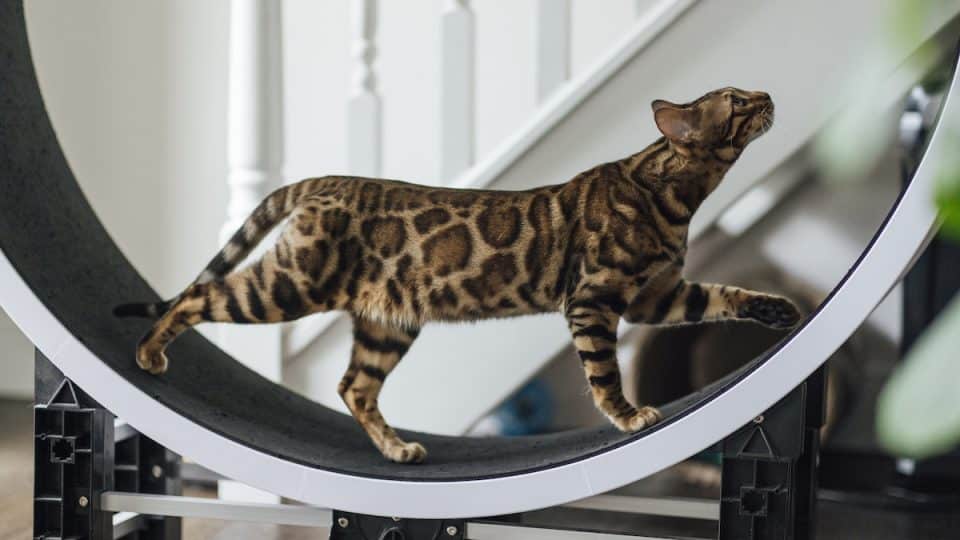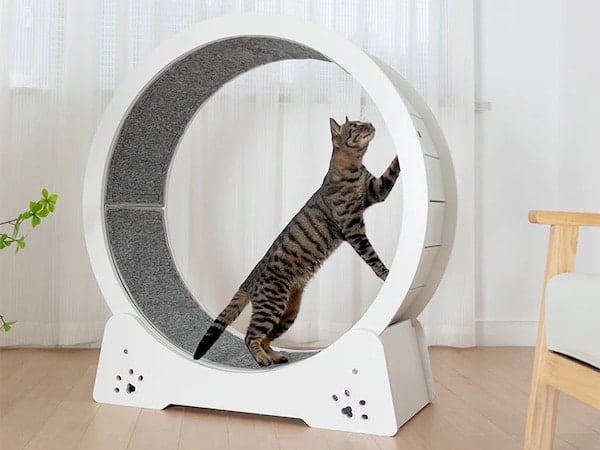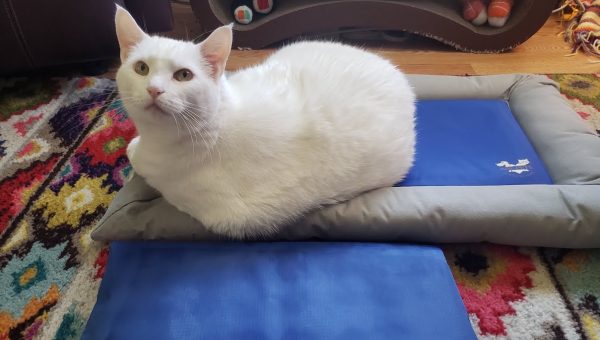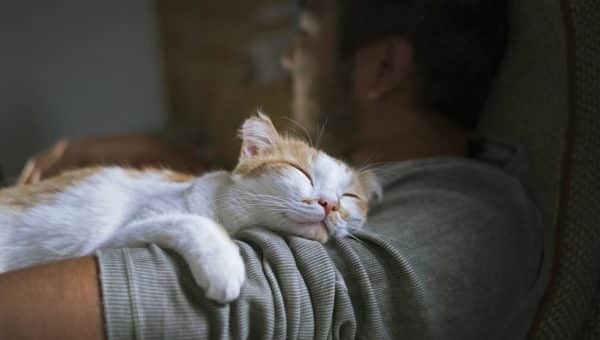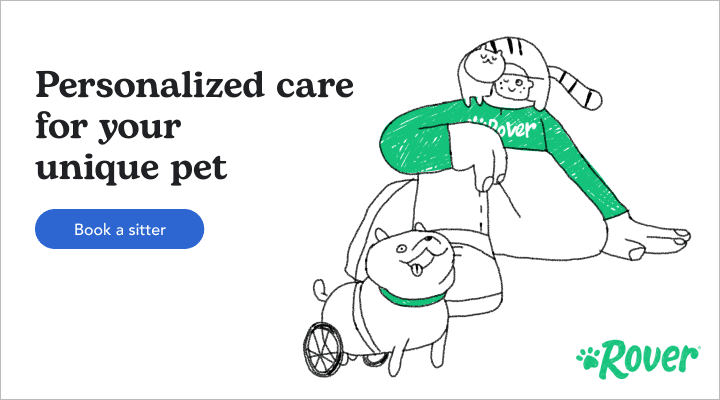- This post contains affiliate links. Read more here.
- Not a substitute for professional veterinary help.
Cat exercise wheels can provide both entertainment and exercise for cats. For pet parents with hyperactive kitties to entertain—or more sedentary cats who could use more exercise—they sound like a brilliant solution. But cat exercise wheels are no small commitment; they’re big and expensive. Lots of prospective buyers wonder: Will cats actually use them? Are they safe? And can they really help a cat lose weight or burn off extra energy? We asked veterinary experts to get some answers.
How Cat Exercise Wheels Work
Cat exercise wheels come in different designs, but most generally feature a 30+ inch wheel mounted on a sturdy base. The interior of the wheel is lined with sisal or low-pile carpeting for traction, and when a cat hops inside and walks, the wheel rotates like a treadmill. Some cat exercise wheels are open on both sides, and some just one. They are generally made of plastic, wood, or composite.
Cat wheels are a bit spendy, with most models being in the $200+ range. Some, like the popular One Fast Cat wheel, are free-standing. Others, such as the Penn-Plax cat exercise wheel, are combined with a larger cat tree. Because the structure itself is not all that complicated, there are also many DIY plans out there that claim to cost less in total than manufactured models—though they do require some elbow grease and knowhow to get up and running.
Though cat exercise wheels have been in use for decades, mostly in Europe, they’ve seen a resurgence on on TikTok. Many videos show cats self-exercising and even playing with each other in cat exercise wheels. But would your cat be interested?
What the Experts Say About Cat Wheels
Patrik Holmboe, Head Veterinarian for Cooper Pet Care, thinks it’s a bit of a gamble. “Cats can use and like exercise wheels, but it largely depends on the individual cat’s personality and preferences,” he explains. “Some cats may be naturally inclined to use an exercise wheel, while others may never show interest.”
While there aren’t official numbers on the percentage of cats that like to use exercise wheels, educated guesses from a variety of experts we spoke with landed at about 20 percent. “It is hard to estimate a percentage of cats that can be trained to use an exercise wheel, as it depends on various factors like the cat’s temperament, age, breed, and overall health condition. If you have a cat that likes to run and is somewhat easy to train, it might be an option for you,” says Holmboe.
Breeds that are high-energy, such as Bengals, Siamese, and Maine Coons, may be more apt to use a cat exercise wheel simply because they crave movement and exercise. Other cats may show no interest whatsoever. Still others may only use an exercise wheel when they have a case of the zoomies but otherwise completely ignore it.
While it is possible to train cats to use an exercise wheel, there’s not really a consensus on how best to do this. Some people recommend using wand toys or laser pointers to get a kitty going while others, recommend treat-based training. Catnip could also be a good option for cats who are energized by it.
“It’s important to note that not all cats will enjoy or benefit from an exercise wheel,” Holmboe cautions. “It’s always recommended to observe your cat’s behavior and consult with a veterinarian before introducing an exercise wheel to ensure it’s safe and appropriate for your cat.”
This is especially true for older cats and small kittens, for whom an exercise wheel might be dangerous or difficult to navigate. Brachycephalic, or short-nosed, cats are also unlikely to find success with exercise wheels simply because they have trouble breathing due to the structure of their skulls—and intense exercise can exacerbate that.
So Should You Get a Cat Exercise Wheel?
Maybe! There are, after all, some clear benefits. “Should a cat like and use an exercise wheel, they do provide numerous benefits,” Holmboe points out. “They provide an outlet for cats to burn off excess energy and keep them physically and mentally active. They can also help to improve their overall health and well-being, including weight management. Just like in humans, generally the more exercise an individual gets, the healthier it is!”
For high-energy cats and cats with a high play drive (i.e., the ankle sneak-attack cats), a cat exercise wheel might be a great addition to the options you provide for their health and entertainment.
But they’re also big, expensive, and hit-or-miss; not all cats can be trained to use or enjoy them. If you have a kitten or a senior cat, a brachycephalic breed, or a cat who already is rarely interested in physical activity, we recommend skipping the cat wheel in favor of more traditional toys. Regular play with the toys a cat does enjoy is essential for good physical and mental health. Cat laser toys, feather wands, and even puzzle toys can be stimulating and healthy.
Still on the fence? Ask your vet for a second opinion. They know your cat’s temperament and can help ensure you spend the money on something both you and your cat can really enjoy.
Further Reading
- One Fast Cat Review: Rover Test Kitties Take a Cat Exercise Wheel for a Spin
- Do Cats Need Puzzle Toys? What Science Says About Interactive Cat Toys and Feeders
- The 19 Best Cat Toys in Every Style, for Every Kind of Cat
- Tackling Obesity in Cats—The Best Products for Overweight Kitties
- Why is My Cat Acting Crazy?
